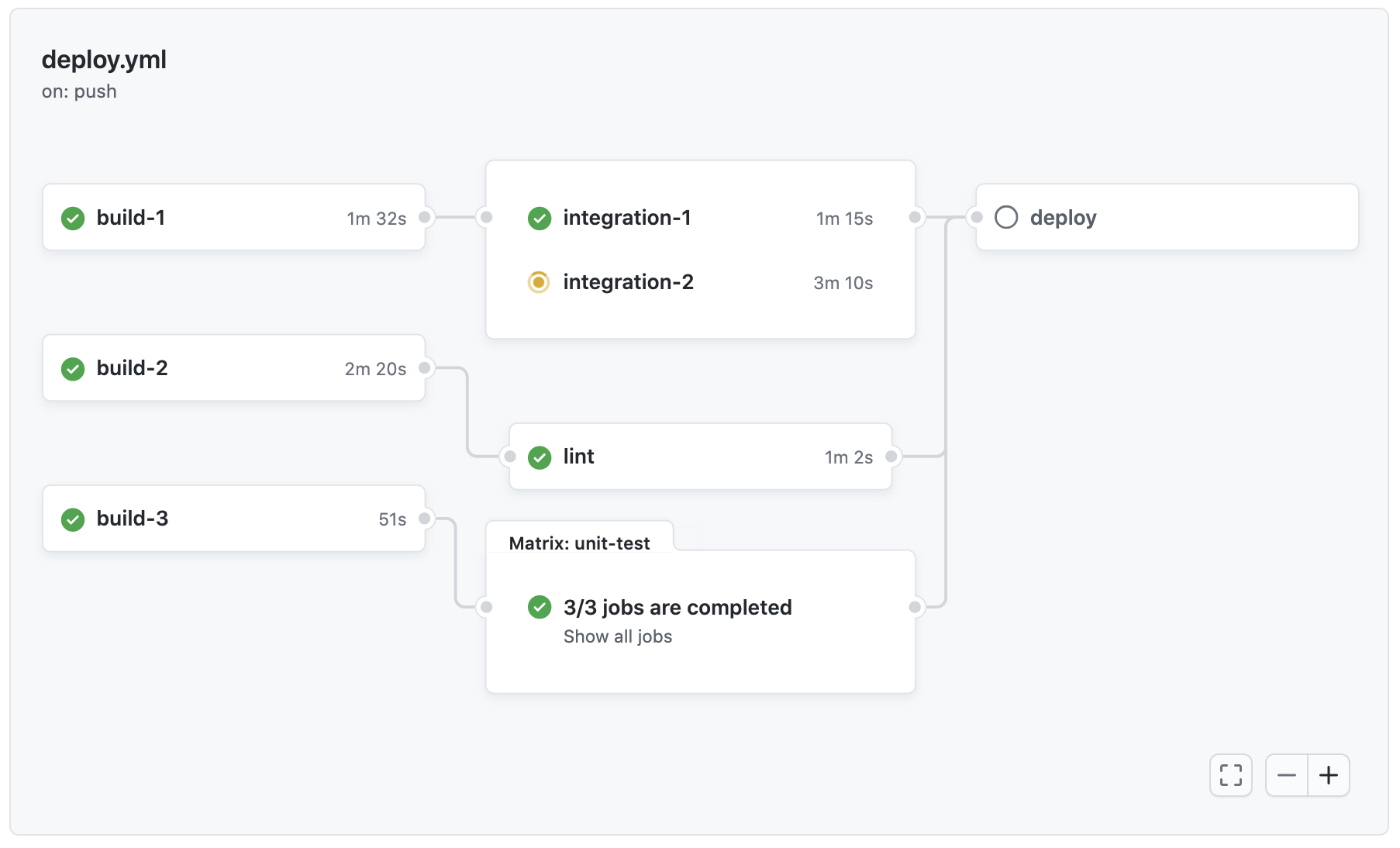Note: GitHub-hosted runners are not currently supported on GitHub Enterprise Server. You can see more information about planned future support on the GitHub public roadmap.
Monitoring your workflows
Using the visualization graph
Every workflow run generates a real-time graph that illustrates the run progress. You can use this graph to monitor and debug workflows. For example:

For more information, see "Using the visualization graph."
Adding a workflow status badge
A status badge shows whether a workflow is currently failing or passing. A common place to add a status badge is in the README.md file of your repository, but you can add it to any web page you'd like. By default, badges display the status of your default branch. You can also display the status of a workflow run for a specific branch or event using the branch and event query parameters in the URL.

For more information, see "Adding a workflow status badge."
Viewing workflow run history
You can view the status of each job and step in a workflow. For more information, see "Viewing workflow run history."
Troubleshooting your workflows
Using workflow run logs
Each workflow run generates activity logs that you can view, search, and download. For more information, see "Using workflow run logs."
Enabling debug logging
If the workflow logs do not provide enough detail to diagnose why a workflow, job, or step is not working as expected, you can enable additional debug logging. For more information, see "Enabling debug logging."
Canceling a workflow
If you attempt to cancel a workflow and the cancellation doesn't succeed, make sure you aren't using the always expression. The always expression causes a workflow step to run even when the workflow is canceled, which results in a hanging cancellation. For more information, see "Expressions".
Monitoring and troubleshooting self-hosted runners
If you use self-hosted runners, you can view their activity and diagnose common issues.
For more information, see "Monitoring and troubleshooting self-hosted runners."